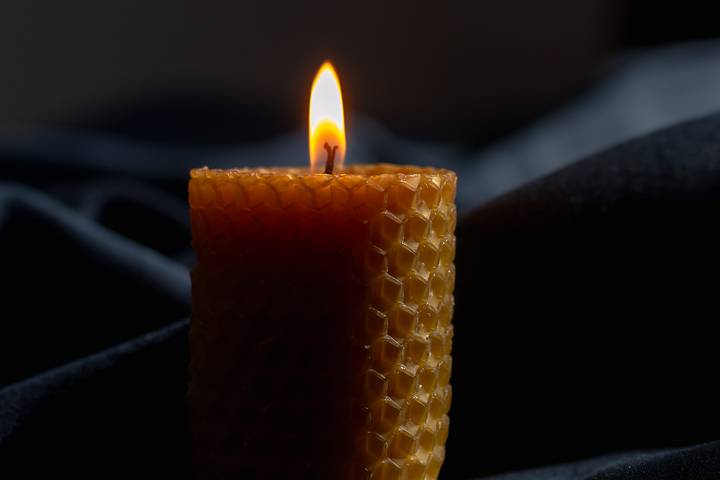Candle wax plays a key role in the quality of a candle. A high-quality wax mixed with premium perfume oils that are as close to all-natural as possible is the ultimate. For candle lovers, understanding the best wax for candles will play an important role in choosing the best candle for one’s self.
The best wax for candles, in our view, tends to be what’s most sustainable to produce and most eco-friendly. Coconut wax should be considered the most premium choice by analyzing the strength of the fragrance, the cost of the materials, and availability. That said, it’s based on personal preference. The varieties mentioned here are the most common types of candle wax, each providing its list of pros and cons. In terms of quality and experience, coconut wax is our pick.
Here is a side-by-side comparison of the different types of candle wax and which is the better option.
1. Coconut Wax
 Coconut wax is one of the newer types of candle wax. It’s harvested from coconuts and is the most eco-friendly wax type on the market. Coconuts are a high-yield and sustainable crop, making coconut wax so popular among anyone looking to prioritize eco-friendliness.
Coconut wax is one of the newer types of candle wax. It’s harvested from coconuts and is the most eco-friendly wax type on the market. Coconuts are a high-yield and sustainable crop, making coconut wax so popular among anyone looking to prioritize eco-friendliness.
Coconut candles wax also hold fragrance and colour and consistently delivers a clean burn with very little soot. The only downside is that coconut wax tends to be slightly more expensive. It’s considered the most premium wax.
2. Paraffin Wax
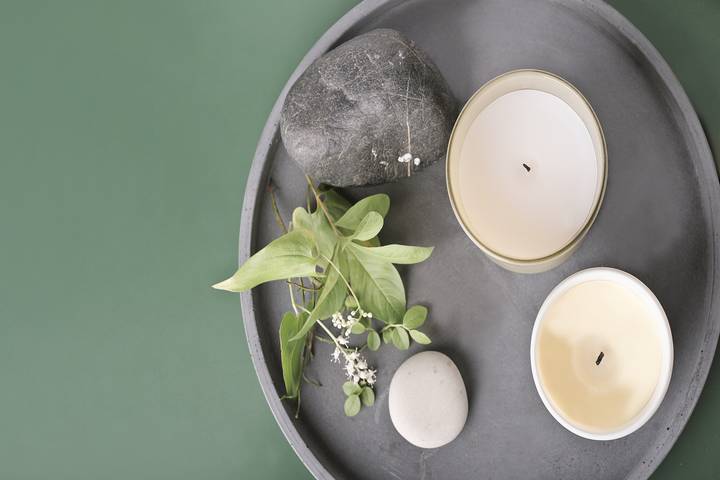 Paraffin wax is inexpensive and the most common type used in commercial candle-making. Another reason why it’s most common is that paraffin wax is known to hold a high amount of fragrance.
Paraffin wax is inexpensive and the most common type used in commercial candle-making. Another reason why it’s most common is that paraffin wax is known to hold a high amount of fragrance.
Available in different melt points, it’s suitable for almost any candle. Unfortunately, it’s not very eco-friendly. It’s a by-product of oil. It’s one of the worst candle waxes from an environmental standpoint.
3 Rapeseed Wax
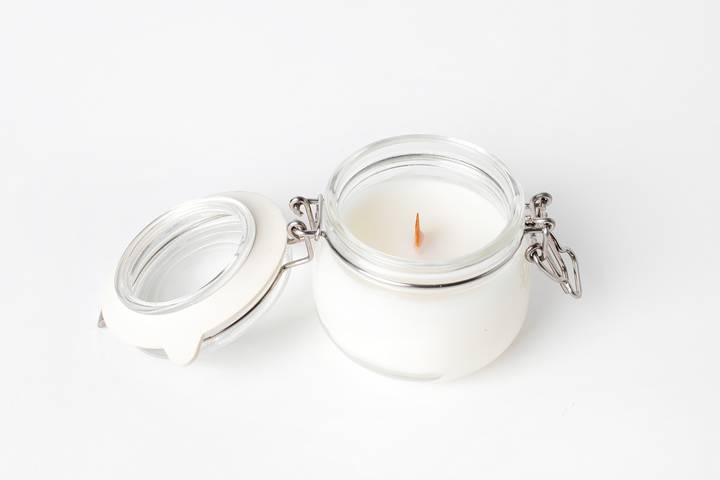 Rapeseed wax is rare to come by in North America. It’s more common in Europe, where rapeseed wax candles are the norm. There it can be locally sourced and is fairly sustainable with a minimal carbon footprint.
Rapeseed wax is rare to come by in North America. It’s more common in Europe, where rapeseed wax candles are the norm. There it can be locally sourced and is fairly sustainable with a minimal carbon footprint.
Also known as canola wax, it is derived from a yellow flower produced from cabbage and mustard-like plants. It’s one of the newer eco-friendly candle wax types, but unfortunately, it is impossible if you live in Canada or the US.
4. Soy Wax
 Soy wax is made from soybeans and is far more eco-friendly than paraffin wax. That said, the soybean industry has been rightly criticized for deforestation and its high use of fertilizers and pesticides. Soy wax is fairly affordable and has a slow burn. It is not the easiest to work with, however.
Soy wax is made from soybeans and is far more eco-friendly than paraffin wax. That said, the soybean industry has been rightly criticized for deforestation and its high use of fertilizers and pesticides. Soy wax is fairly affordable and has a slow burn. It is not the easiest to work with, however.
Temperature can have a drastic effect on the quality of the wax. Soy wax can shrink, white spots can form, and it doesn’t hold as much fragrance as other types of wax.
5. Palm Wax
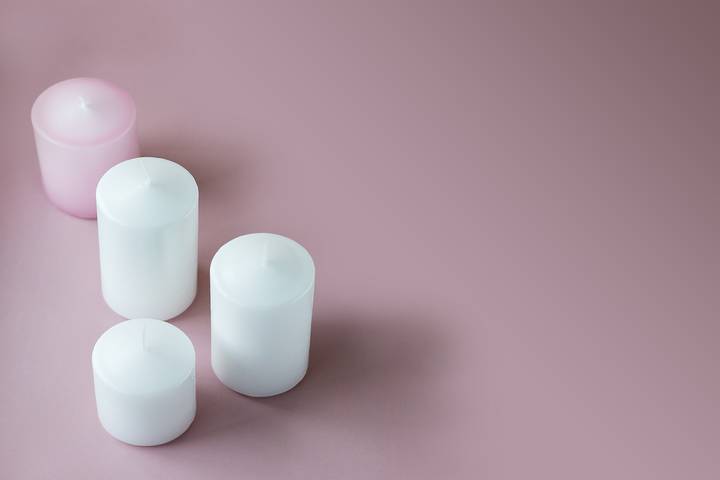 Palm wax is made from palm oil, which is natural and environmentally friendly. When it’s solidified, a pattern of crystal structures forms, resulting in one of the hardest natural waxes for candles.
Palm wax is made from palm oil, which is natural and environmentally friendly. When it’s solidified, a pattern of crystal structures forms, resulting in one of the hardest natural waxes for candles.
For someone making free-standing pillar candles, something like palm wax is exactly what you want. Palm wax can be shipped, stored, and used in all climates, has a high fragrance load, and burns efficiently.
6. Beeswax
 Beeswax is a very traditional form of candle wax. It’s eco-friendly, taken from bees during the honey-making process. Beeswax has a very subtle aroma that helps to purify the air. It’s hard and solid, often used in unscented candles or blends.
Beeswax is a very traditional form of candle wax. It’s eco-friendly, taken from bees during the honey-making process. Beeswax has a very subtle aroma that helps to purify the air. It’s hard and solid, often used in unscented candles or blends.
Beeswax has one of the more non-toxic materials one can use to make candle wax, releasing no toxic by-products or heavy soot. Beeswax is one of the better types of wax for candles there is.
7. Gel Wax
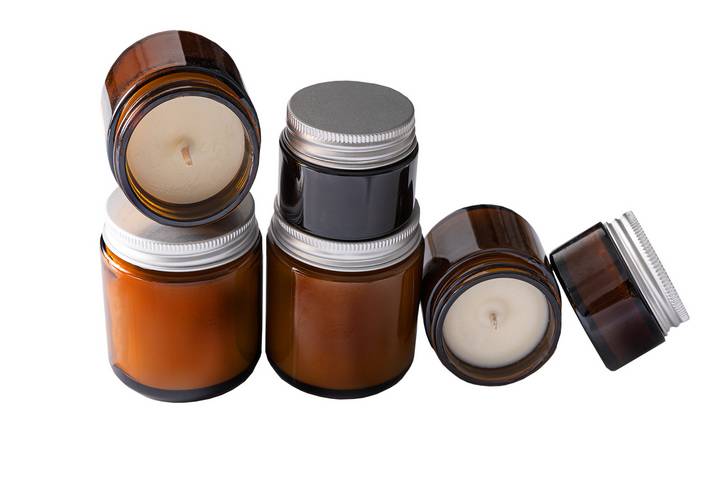 Gel wax isn’t wax at all. It’s resin and mineral oil. Gel wax is similar to other types of candle wax, holding a similar amount of scent, in a similar colour, and melting and burning like any type of function wax.
Gel wax isn’t wax at all. It’s resin and mineral oil. Gel wax is similar to other types of candle wax, holding a similar amount of scent, in a similar colour, and melting and burning like any type of function wax.
The primary difference is gel wax is transparent. This gives it a really interesting effect and paves the way for an entirely different type of candle. Gel wax can be made to imitate liquids or water or is used in novelty candles made to resemble beer or wine.
8. Wax Blends
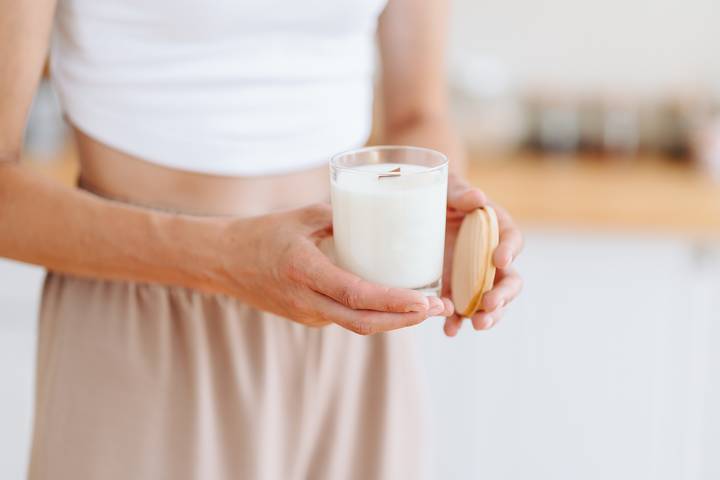 Some companies, candle brands, and candle makers will use two or more types of wax in a blend. These sort of signature blends are often put together to get the best characteristics of each ingredient but are often an economical choice or one where a candle-maker seeks to reduce their carbon footprint.
Some companies, candle brands, and candle makers will use two or more types of wax in a blend. These sort of signature blends are often put together to get the best characteristics of each ingredient but are often an economical choice or one where a candle-maker seeks to reduce their carbon footprint.
It is often easier to work with a single type of candle wax, but in certain conditions, you may prefer a blend.

